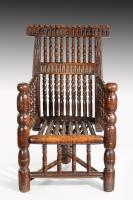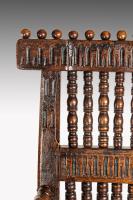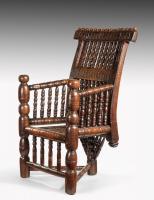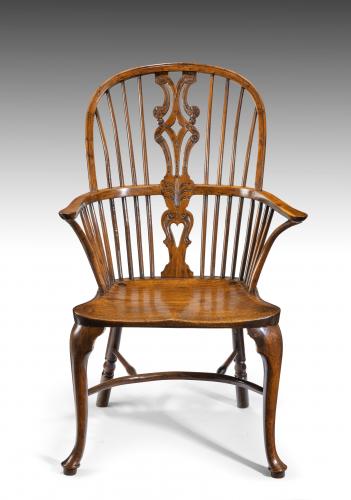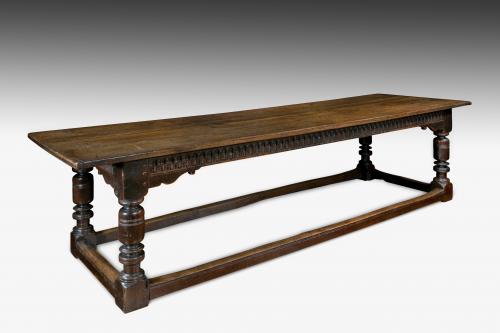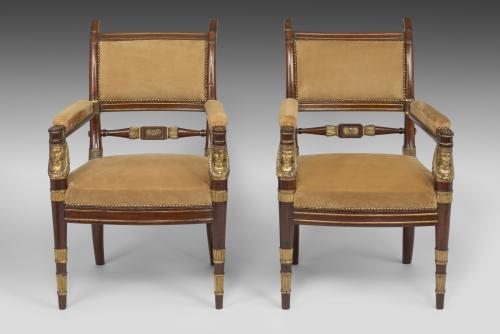
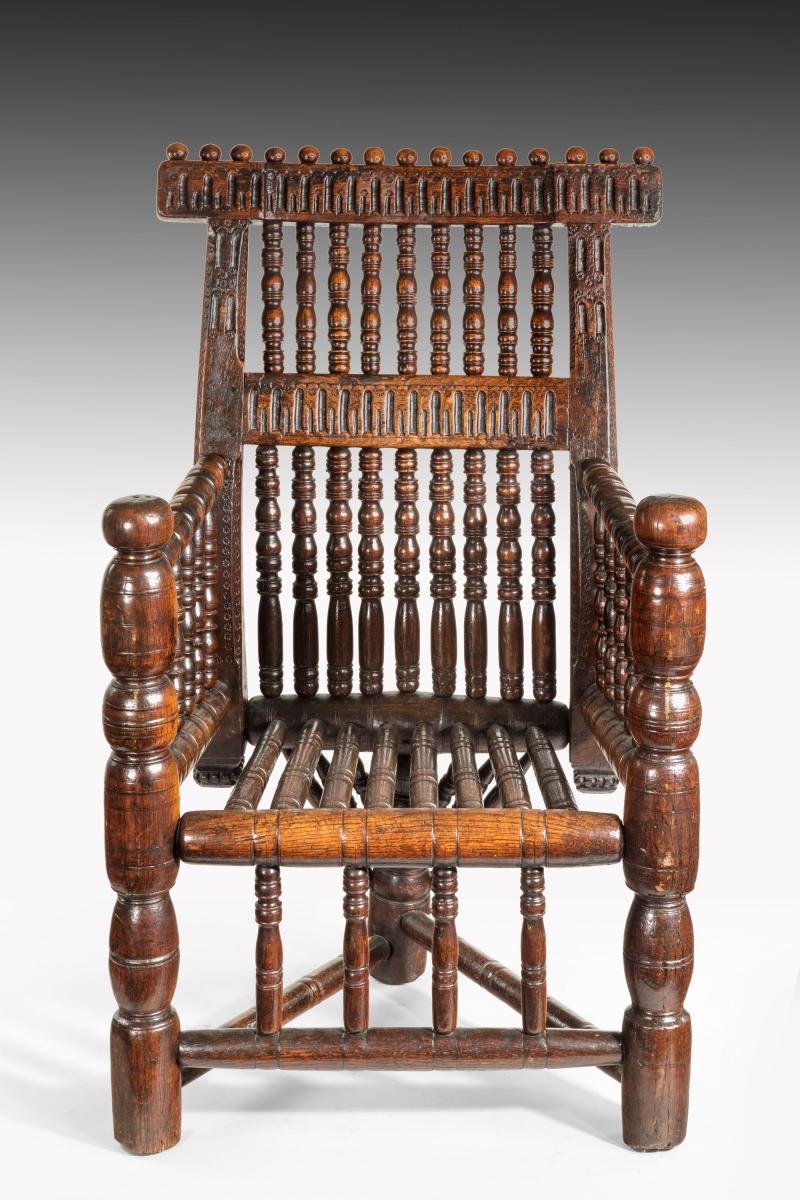
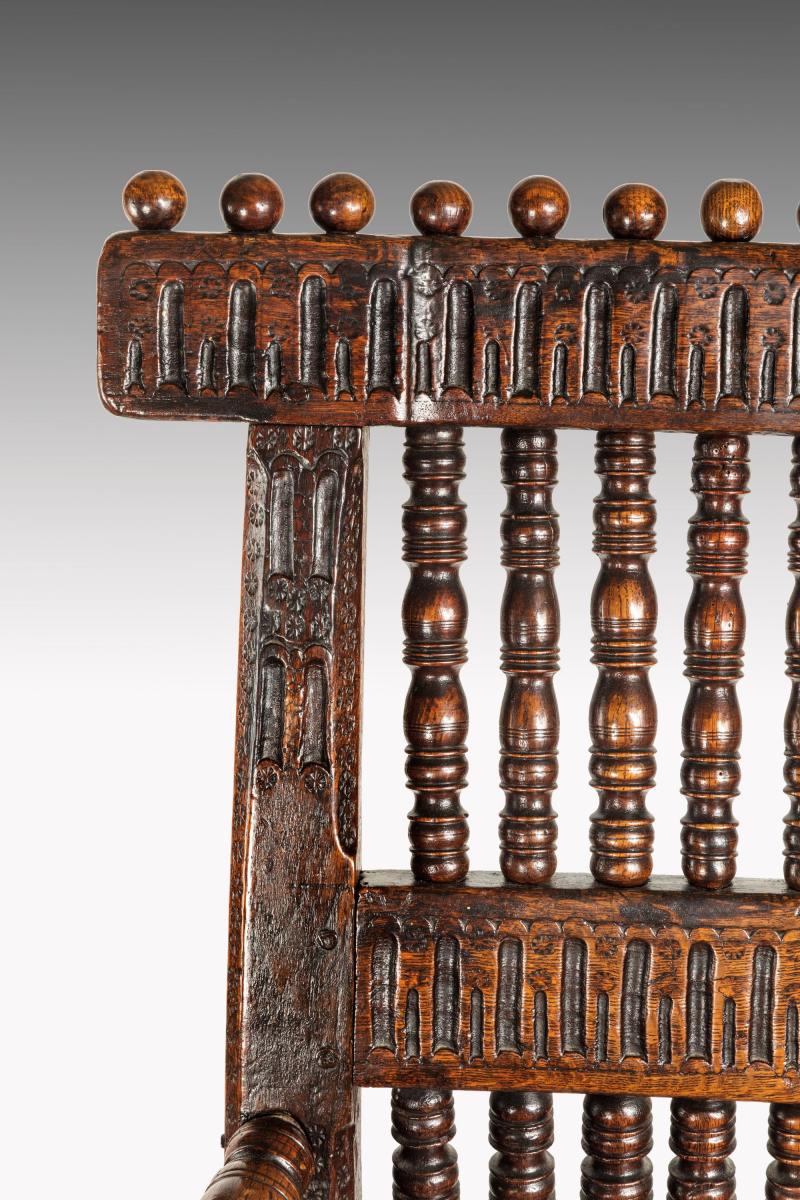
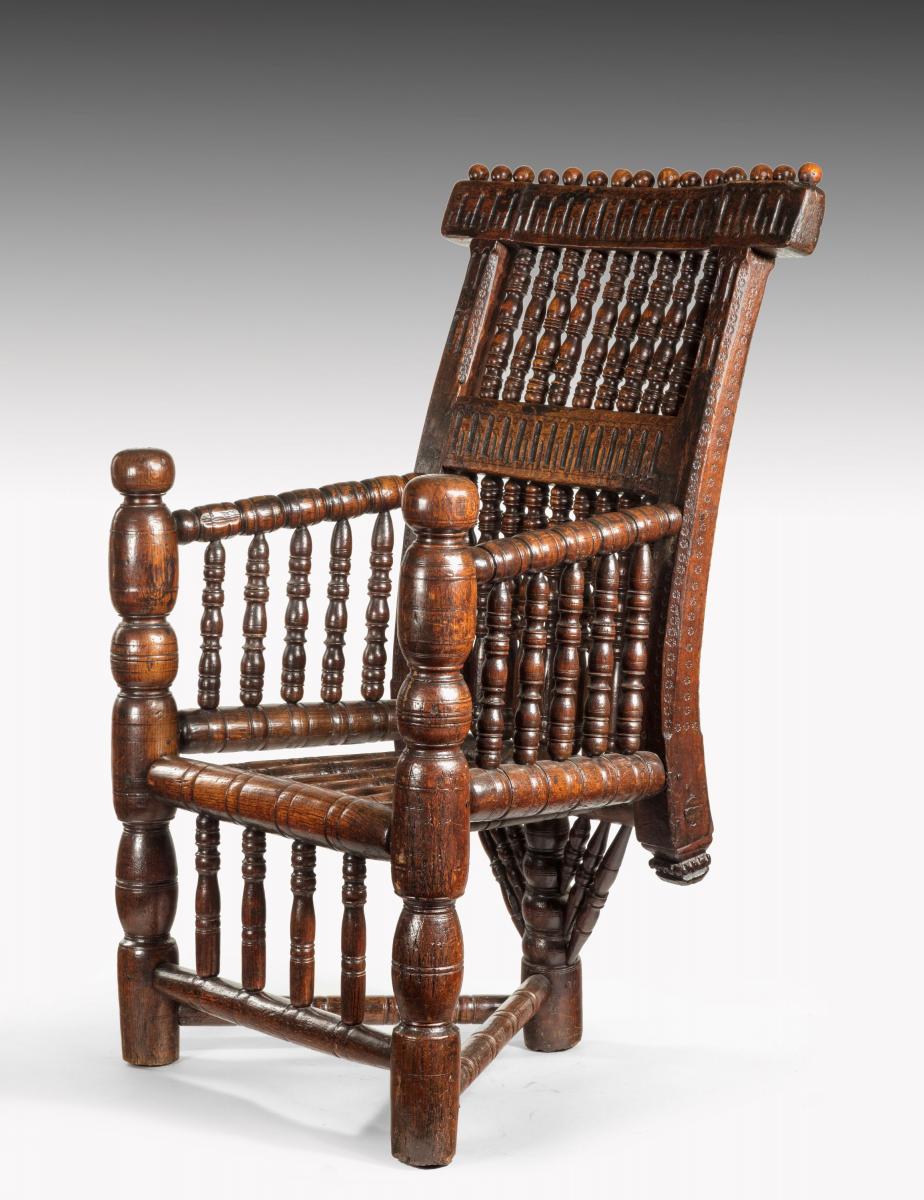
Price on application
This object includes complimentary, Insured Shipping / Delivery within the UK
This object is eligible for a Certificate of BADA Provenance
The BADA Standard
- Since 1918, BADA has been the leading association for the antiques and fine art trade
- Members are elected for their knowledge, integrity and quality of stock
- Our clients are protected by BADA’s code of conduct
- Our dealers’ membership is reviewed and renewed annually
- Bada.org is a non-profit site: clients deal directly with members and they pay no hidden fees
James I Oak and Ash Turner’s/Thrown Armchair.
ENGLAND - North Country, Possibly Lake District, circa 1620.
Known as a ‘Turner’s chair’ because all the parts, including the seat, are turned on a pole-lathe by a wood-turner – except for the unusual nulled-carved and punched-decorated horizontal rails and uprights incorporated into the back.
A most unusual feature of this chair is that the back uprights terminate with pendants and as such are disengaged from a single rear leg, the latter forming a three-post base with the bold, turned front supports.
With four spindles between the front seat rail and the front stretcher, and a row of ball finials along the top edge of the stepped and curved cresting rail.
Stools and chairs are the most important aspects of turners’ furniture. The role of the turner is usually considered a secondary function – as a decorator of joined furniture, taking on aesthetic rather than structural responsibilities.
Yet the turner was also responsible for an independent range of items, which included furniture, spinning wheels, mortars, cups, bowls and scales. The principle of turnery consists of shaping a piece of wood with chisels whilst it revolves around an axis between the jaws of a lathe.
This process was precisely described in the seventeenth Century: ‘…Any substance, be it Wood, Ivory, Brass, etc., pitcht steddy upon two points (as on an Axis), and moved about on that Axis, also describes a Circle concentric to the Axis; And an Edge-Tool set steddy to that part of the Aforesaid Substance that is nearest the Axis, will in a Circumvolution of that Substance, cut off all the parts of Substance that lies further off the Axis and make the outside of that Substance also Concentrick to the Axis…
This is a brief Collection, and indeed the whole Summ of Turning…’. (see Victor Chinnery, ‘Oak Furniture: The British Tradition’, Antique Collectors’ Club, 1979, pp. 81-86 for information about turning; and pp.87-104 for information about turned chairs).
The terms ‘turner’ and ‘thrower’ mean the same thing, thus the classic turned chairs are described as both ‘turneyed’ and ‘throwen’ in English inventories.
Dimensions
Width: 67.5cm; Depth: 58.5cm; Height: 114.5cmPrice on application
This object includes complimentary, Insured Shipping / Delivery within the UK
This object is eligible for a Certificate of BADA Provenance
Stock number
6507The BADA Standard
- Since 1918, BADA has been the leading association for the antiques and fine art trade
- Members are elected for their knowledge, integrity and quality of stock
- Our clients are protected by BADA’s code of conduct
- Our dealers’ membership is reviewed and renewed annually
- Bada.org is a non-profit site: clients deal directly with members and they pay no hidden fees


